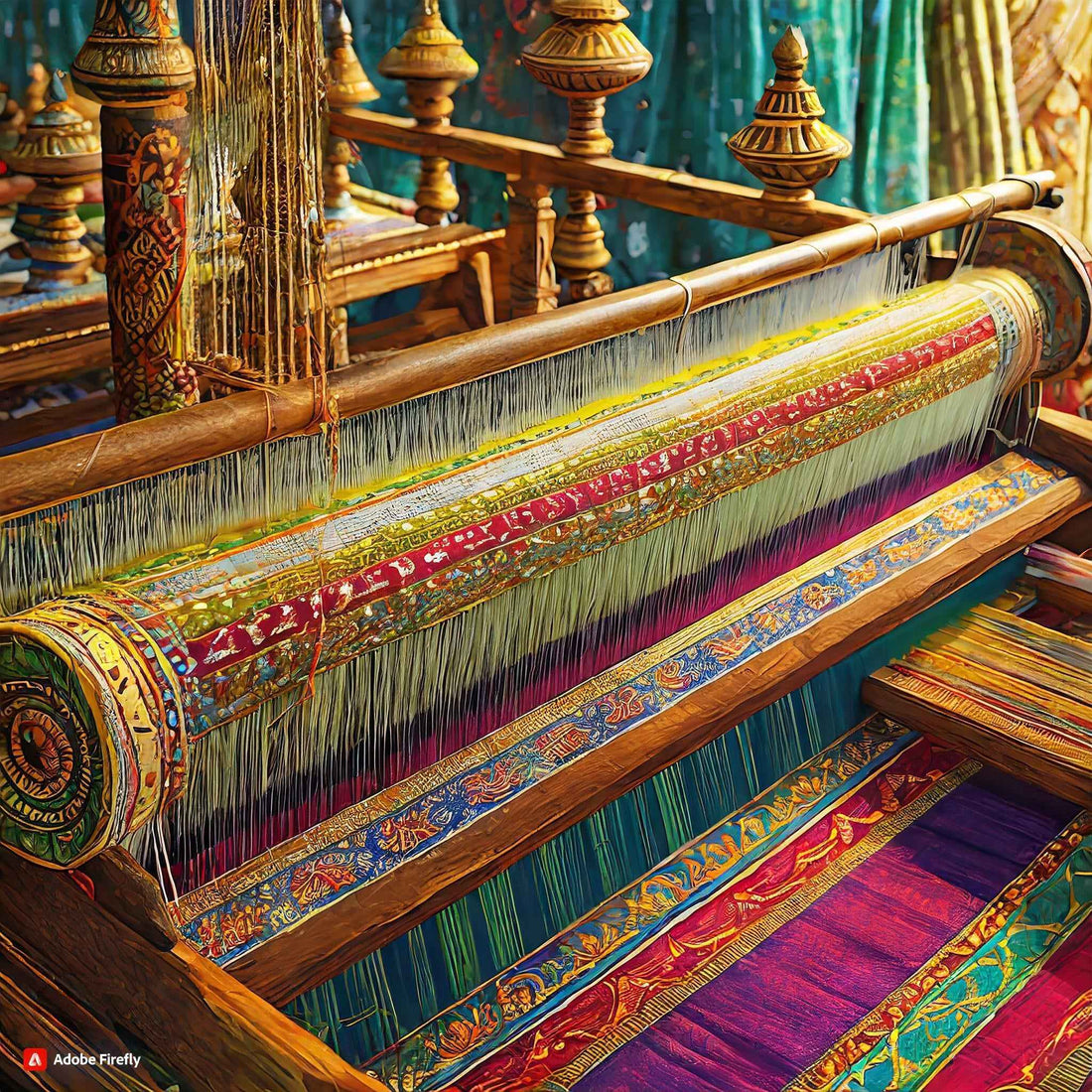Indian Silk Weaving Heritage: A Timeless Craft and Cultural Legacy
Indian silk weaving heritage is a rich and intricate tapestry that reflects the country’s vibrant culture and history. For centuries, silk has been an integral part of Indian craftsmanship, symbolizing luxury, elegance, and tradition. Each state in India boasts its unique silk weaving techniques, from the exquisite Banarasi saris of Uttar Pradesh to the fine Tussar silk of Jharkhand, and the intricate Patola of Gujarat. The art of silk weaving embodies the skills of artisans who have dedicated their lives to this craft, passing down their techniques and stories through generations.
Throughout history, silk was highly valued and served not only as a fabric but also as a symbol of status and wealth. The production of silk dates back to ancient times, with references found in texts such as the Mahabharata and the Puranas. The Silk Route facilitated trade and cultural exchange, allowing Indian silk to become renowned worldwide. This history contributes to the allure and significance of Indian silk weaving heritage, making it a living testament to India's artistic legacy.
In contemporary times, Indian silk weaving continues to thrive amid industrialization and modernization. Many artisans still operate traditional looms, crafting beautiful pieces that captivate buyers both domestically and internationally. The craftsmanship involved in creating silk textiles can take weeks to months, depending on the complexity of the design. Each piece tells a story, reflecting not just the artistry but also the cultural narratives of the communities from which they originate.
Efforts are being made to preserve and promote this heritage through various initiatives. Government programs, NGOs, and fashion designers are working collaboratively to ensure that traditional weaving techniques are not lost. Introducing new designs and facilitating access to global markets for artisans plays a crucial role in sustaining this age-old craft. Moreover, an emphasis on sustainable practices and the use of natural dyes is beginning to take root, highlighting the importance of eco-friendly methods in textile production.
Moreover, the significance of Indian silk weaving can be seen in festivals, ceremonies, and everyday life. Weddings, for instance, often feature silk garments adorned with intricate embroidery and handwoven patterns, making them a staple in bridal trousseaus. These garments hold sentimental value and are often passed down as heirlooms, further emphasizing the enduring appeal of silk textiles.
To truly appreciate the Indian silk weaving heritage, one must not only admire the finished pieces but also understand the painstaking process involved. From the cultivation of silkworms to the dyeing techniques and weaving processes, every step requires meticulous attention to detail. The artisans, with their deft hands and creative minds, bring into existence fabrics that are not merely materials but works of art.
Furthermore, various forms of silk have different characteristics based on the region they are produced in, contributing to the diversity within Indian silk weaving. For example, while Kanchipuram silk is known for its vibrant colors and rich texture, the soft elegance of Muga silk from Assam has its unique charm. This regional diversity adds to the richness of the Indian silk fabric landscape, making it a treasure trove for textile enthusiasts and collectors alike.
As global appreciation for artisanal crafts continues to grow, the potential for Indian silk weaving to reach new audiences is immense. Online platforms that connect artisans with consumers are emerging, allowing for greater visibility and appreciation of handmade silk products. Consumers are increasingly valuing authenticity and craftsmanship, opting for unique, handmade items over mass-produced alternatives.
Challenges remain, however, as many artisans still face economic hardships and lack access to resources and training. It is essential to create sustainable business models that can provide fair wages and support the livelihoods of these weavers. As we delve deeper into the significance of Indian silk weaving heritage, it becomes clear that this craft is not just about fabric but entwines with the identity of the communities involved.
In conclusion, the Indian silk weaving heritage stands as a testament to the timeless art and cultural legacy that is deeply woven into the fabric of Indian society. This craft not only preserves ancient traditions but also adapts to contemporary tastes, thus ensuring its survival for future generations. The narratives encapsulated in each woven thread bridge the past with the present, inviting the world to celebrate the beauty of Indian silk. The journey of Indian silk weaving is far from over; it continues to evolve, inspire, and captivate the hearts of many around the globe.

